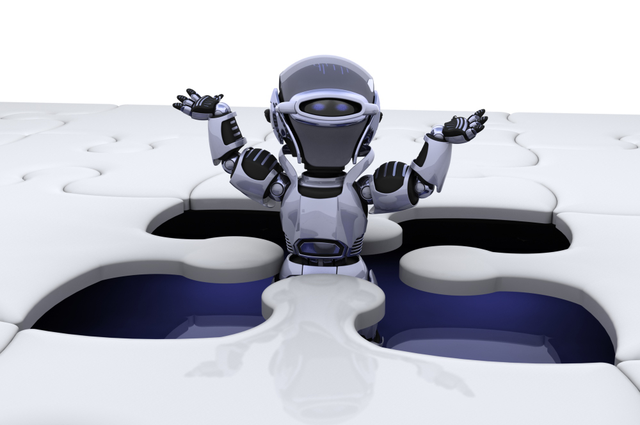In the world of crisis, the pulse of emergency response quickens with the integration of cutting-edge technology.
As you navigate the concerns of a world grappling with increasingly intense disasters, the importance of adapting the strategies becomes evident. Your concerns about the efficacy of traditional methods echo in a world evolving faster than ever. It is crucial to prioritize addressing these concerns promptly.
In this blog, we’ll explore a riveting narrative. It’s a tale of how firefighting robots and drones reshape the essence of emergency response.
The Rise of Firefighting Robots
These intelligent machines, equipped with advanced sensors and artificial intelligence, navigate hazardous environments. They offer precision that was once the exclusive domain of human firefighters.
These firefighting robots are designed to operate in conditions too dangerous for human intervention, ensuring a quicker and safer response to crises. Technological developments are also being made for improved robots for firefighting solutions through research.
To help firemen in interior conditions, in the Journal of Field Robotics, researchers have mentioned that they have created an independent ground robot. The robot measures humidity, temperature, air quality, and location using a variety of sensors. The data it collects is then sent to human personnel, reports Tech Xplore.
It has three operating modes. The first is evacuation, which establishes quick and secure paths. Autonomous allows for free exploration, and manual allows for operator management from a distance. With its flexible modular architecture, the robot has undergone real-world testing and shown promise in enhancing firefighting actions.
The rise of firefighting robots not only enhances the efficiency of emergency response but also mitigates the risks faced by traditional firefighting crews.
Drones in Fire Response
Amidst the evolving emergency response landscape, drones have emerged as indispensable assets in the fight against wildfires. One pressing concern in traditional firefighting has been firefighters’ exposure to harmful chemicals, particularly from firefighting foam.
These chemicals, including PFAS compounds, pose severe health risks to the brave individuals battling blazes. Drones, equipped with advanced sensors and imaging capabilities, now play a pivotal role in addressing this challenge.
These unmanned aerial vehicles survey the affected areas, providing crucial data without exposing human responders to hazardous substances. Emergency teams can strategize more effectively by employing drones to assess the extent of the fire and identify areas contaminated with harmful chemicals.
Incorporating drones into firefighting enhances responders’ safety and facilitates a swifter and more targeted response.
In recent developments, concerns about the health impacts of AFFF, a firefighting foam containing PFAS, have led to legal actions. The recent AFFF lawsuit update reveals ongoing legal proceedings addressing the damages caused by these chemicals. Connecticut’s Attorney General has launched two legal proceedings against 28 chemical manufacturers. It alleges that they intentionally contaminated the state’s water and natural resources using PFAS chemicals.
The health of firemen is at risk from these hazardous substances. These consist of testicular, liver, kidney, and bladder cancer and other illnesses.
According to TruLaw, individuals affected by PFAS exposure are seeking justice. They have the right to get compensation as well. It may range between $10,000 and $300,000, depending on the strength of the case, for the victim’s aid. It underscores the urgency of adopting innovative solutions like drones to minimize health risks in firefighting operations.
Enhanced Situational Awareness
These advanced technologies provide a comprehensive and real-time understanding of the disaster landscape, enabling responders to make informed decisions swiftly. Firefighting robots, equipped with sensors and artificial intelligence, navigate through challenging environments, collecting critical data on the fire’s intensity, temperature, and potential hazards.
With their aerial capabilities, drones offer an unparalleled perspective, surveying vast areas and providing a holistic view of the situation. This enhanced situational awareness is instrumental in developing effective strategies to contain and extinguish fires. Responders can identify hotspots, predict the fire’s trajectory, and assess environmental and human safety risks.
Search and Rescue Capabilities
These technological marvels, equipped with specialized sensors and capabilities, are pivotal in locating and aiding individuals in disaster-stricken areas. Firefighting robots, designed to navigate hazardous environments, can access spaces that may be too difficult for human responders. It enhances the scope and speed of search and rescue missions.
With their aerial agility, drones cover expansive terrains swiftly, offering a comprehensive overview of the affected areas. According to SFPE, search and rescue and outdoor firefighting operations increasingly use aerial robots, such as repurposed military drones and quadrotors.
While smaller military drones can provide firefighters with an instant alternate view, bigger drones are used to put out wildland fires. These bigger drones are outfitted with cutting-edge sensors and imaging capabilities and can carry loads of as much as 6,000 pounds.
In addition to strengthening firefighting operations and raising situational awareness, they offer thorough assessments of ground conditions. The deployment of outdoor robotics in search & rescue facilitates prompt reaction times. It also guarantees the effectiveness and security of firefighting endeavors.
Fire Suppression Technologies
Armed with sophisticated sensors, artificial intelligence, and fire-suppressing agents, firefighting robots can enter hazardous environments to extinguish flames in areas inaccessible to humans. Their ability to analyze the fire’s behavior and adapt in real-time enhances the overall effectiveness of fire suppression efforts.
Drones, with their agility and versatility, contribute significantly to fire suppression. Equipped with fire retardants or water payloads, they can conduct targeted aerial firefighting, reach challenging locations, and provide critical support to ground teams.
Remote Monitoring and Communication
Equipped with advanced sensors, firefighting robots can venture into dangerous environments, collecting crucial information on fire dynamics, temperature, and potential hazards. This data is transmitted instantly to human responders, enabling them to make informed decisions and adjust their strategies promptly.
With their aerial vantage point, drones play a pivotal role in remote monitoring. They survey vast areas affected by fires, offering a comprehensive overview that aids in strategic planning.
Also, these drones are transforming the management of wildfires by offering quick and affordable alternatives for monitoring, containment, assessment, and detection. According to Aerial Fire Magazine, the scope and efficacy of traditional techniques, such as satellite photography and aircraft surveillance, are constrained. They provide quick airborne observation, making it possible to identify and confirm wildfires early on.
They improve agency-to-agency cooperation and provide vital situational information for effective containment and fire response. They also help to keep firefighting teams safe by searching for spotfires, tracking dynamic fire behavior, and delivering real-time data. Due to their cost-effectiveness, sophisticated monitoring capabilities, and changing regulatory landscape, drones quickly become essential instruments for fighting wildfires.
Challenges and Limitations
One significant hurdle is the complexity of navigating unpredictable and dynamic disaster environments. While designed for precision, firefighting robots may encounter difficulties adapting to rapidly changing conditions, such as shifting winds or collapsing structures. The reliance on sensors and artificial intelligence raises concerns about the robustness of these technologies in extreme scenarios.
Despite their aerial capabilities, drones face limitations in adverse weather conditions, hampering their effectiveness during storms or heavy precipitation. The need for a clear line of sight for communication and potential interference in densely populated areas can also pose challenges. These technologies’ high initial costs and maintenance expenses may limit widespread adoption, especially in resource-constrained regions.
In conclusion, integrating firefighting robots and drones marks a revolutionary leap in emergency response. With their precision and versatility, these technological allies redefine how you combat crises. From navigating hazardous environments to enhancing situational awareness and aiding search and rescue, these innovations offer unparalleled support to human responders.



 Practical Strategies for Building Reliable Network Security in a Cloud-First World
Practical Strategies for Building Reliable Network Security in a Cloud-First World  DeepSeek R1: The AI Revolution That Defied U.S. Trade Barriers and Stunned the World
DeepSeek R1: The AI Revolution That Defied U.S. Trade Barriers and Stunned the World  Why Some AI Models Fail Under Pressure – A DeepSeek AI Case Study
Why Some AI Models Fail Under Pressure – A DeepSeek AI Case Study  Various Ways to Sell Bitcoin for Cash Instantly
Various Ways to Sell Bitcoin for Cash Instantly  Understanding the Fundamentals of Intrusion Prevention Systems
Understanding the Fundamentals of Intrusion Prevention Systems  Elevate Your Living Space: 8 Smart Home Mobility Innovations
Elevate Your Living Space: 8 Smart Home Mobility Innovations